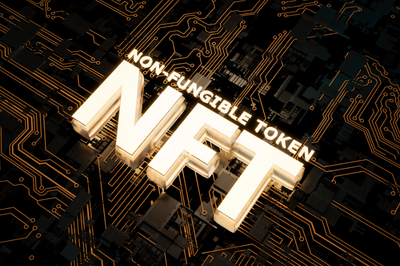BLOGS
Blogs Details
NFTs: Non-fungible tokens are a new and exciting use case for blockchain technology.

Non-fungible tokens (NFTs) are a new and exciting use case for blockchain technology that have captured the attention of people all over the world. NFTs are unique digital assets that are indivisible, non-interchangeable, and non-replicable, making them truly one-of-a-kind.
In simpler terms, NFTs are digital tokens that represent ownership of a unique asset, such as a piece of art, a video game item, or a tweet. Unlike traditional cryptocurrencies, which are fungible and interchangeable, NFTs are unique and cannot be exchanged for other tokens of the same value.
So, how do NFTs work? At their core, NFTs are created and traded on blockchain networks, which use complex algorithms and cryptographic techniques to ensure their authenticity and uniqueness. Each NFT is stored on a blockchain in a smart contract, which contains all the relevant information about the asset it represents, including ownership, provenance, and transaction history.
Because NFTs are unique and scarce, they have quickly become a valuable commodity in the digital world. Artists and creators, in particular, have embraced NFTs as a way to monetize their work in a new and innovative way. By selling their work as NFTs, creators can establish a direct relationship with their audience and receive a fair share of the profits from each transaction.
But the appeal of NFTs extends far beyond the world of art and culture. In the gaming industry, for example, NFTs are being used to represent in-game items and characters, allowing players to truly own their virtual assets and even trade them with others. And in the world of sports, NFTs are being used to create unique collectibles that fans can own and trade, providing a new level of engagement and value.
In summary, NFTs are an exciting new use case for blockchain technology that offer a unique way to represent and trade digital assets. By providing a way to establish ownership and authenticity in the digital world, NFTs have the potential to revolutionize the way we think about ownership, creativity, and value.
In addition to the applications mentioned above, NFTs are also being used in a variety of other industries, including real estate, music, and even virtual worlds. For example, in the real estate industry, NFTs can be used to represent ownership of properties, enabling investors to buy and sell property shares without the need for intermediaries. In the music industry, NFTs can be used to represent ownership of songs, albums, and other music-related content, allowing artists to monetize their work and build a loyal fan base.
One of the key benefits of NFTs is that they provide a way to establish a direct relationship between creators and their audience or customers. By cutting out intermediaries and middlemen, NFTs enable creators to retain more of the profits from their work, while also providing a more transparent and traceable system of ownership and transaction history.
However, it is important to note that the NFT market is still in its early stages, and as with any new technology or investment opportunity, there are risks involved. Prices of NFTs can be volatile, and there have been concerns about the environmental impact of NFTs, particularly in terms of their energy consumption.
Despite these challenges, the potential of NFTs is clear, and many believe that they represent a new era in the digital economy. As blockchain technology continues to evolve and new use cases for NFTs emerge, it is likely that we will see continued growth and innovation in this space in the years to come.
Another potential application of NFTs is in the world of identity verification and authentication. Because NFTs are unique and cannot be replicated, they could be used to establish a digital identity that is secure and trustworthy. This could have a wide range of applications, from online voting to financial transactions to government services.
NFTs are also providing new opportunities for artists and creators to monetize their work and connect with their fans. By selling their work as NFTs, artists can create a new revenue stream and reach a global audience, without the need for traditional gatekeepers or middlemen. This is particularly relevant in the music industry, where NFTs are being used to create new forms of fan engagement, such as exclusive backstage passes or meet-and-greets.
In the gaming industry, NFTs are being used to create new business models that allow players to truly own their virtual assets. This has the potential to revolutionize the way we think about gaming and create new opportunities for players to earn income and build their skills.
Finally, NFTs are also providing new opportunities for charitable giving and social impact. By using NFTs to represent unique charitable donations, organizations can increase transparency and accountability, and engage a new generation of donors who are looking for innovative ways to make a difference.
In conclusion, NFTs are a new and exciting use case for blockchain technology that have the potential to revolutionize a wide range of industries. By providing a new way to represent and trade digital assets, NFTs are creating new opportunities for creators, artists, gamers, and other stakeholders. While there are challenges and risks involved, the potential of NFTs is clear, and it is likely that we will see continued growth and innovation in this space in the years to come.
Learn more about Oxyo2 in the website: https://oxyo2.org/